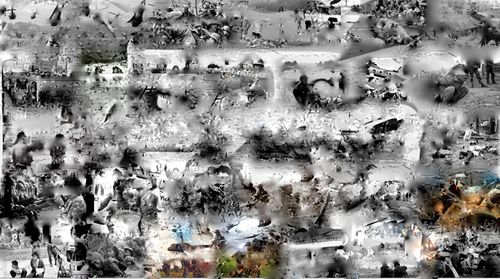Artyom
Title 2015
Artyom’s work entitled “New Image” is a series of images of that have been made using Google Image search results. In his work Artyom explores the relations between images and the technology that is responsible for their production and distribution. Namely how technological endeavors came to affect the dynamics within image culture.
Artyom Kocharyan (AM) is visual artist based in Rotterdam. His work explores the contemporary visual culture, namely the culture of images that increasingly dominate the world of communication. Artyom’s work is concerned with the representation aspect of images and their ability to determine our vision of the world. Artyom is engaged with the representation apparatus that is peculiar to current digital and online culture.


Photography, shortly after its invention, took on itself the responsibility of documenting history and giving us images of our world that was previously granted to painting. Photography was the first image of the kind, one that is conceived through technologies – camera, that were products of modern science. Photography democratized the image making proses allowing anyone to produce an image with a click of a button. As well us taking images out from the realm of aesthetics and art which was peculiar to painting, and making them relevant to almost every aspect of culture. As technology developed giving us television and the general media establishment, the bigger part of our world became to be seen through those images than by our own eyes. In today’s online world images function as distinct communication medium and seem do be a better fit to the quick and accumulated online culture where they serve as windows through which we can access the world far beyond our reach.
Photography as an image is known for its ability to give an objective representation of the world – it shows the world ‘as it is’. This notion although has been disproved by number of studies, is till excepted by the wider culture. Because of it scientific nature, namely the fact that the subject prescribes itself on the film without the involvement of human hand – without human subjectivity, photography came to gain its objective status. This notion went as far as making photography an image that can stand as a ‘proof’ for something. Similarly Google Images established itself as an agency that gives a precise and accurate representation of a subject. Its algorithms that developed in such way to display the most relevant and the most popular images of the subject. So its objective notion seems to rely again on its scientific factor, namely on the algorithmic analysis that automatically choose the content and arranging them by their on the page by their relevance.

